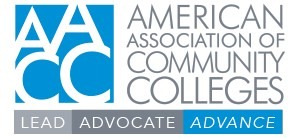Editor’s note: This weekly update from the government relations office at the American Association of Community Colleges (AACC) provides the latest on what’s happening in Washington and how AACC is advancing policies to support community colleges and students. Send questions, feedback and more to: kgimborys@aacc.nche.edu.
- Office of Federal Student Aid announces FAFSA fix for contributors without social security numbers, first batch of ISIRs sent to colleges
- Biden Administration releases Fiscal Year 2025 budget
Office of Federal Student Aid announces FAFSA fix for contributors without social security numbers, first batch of ISIRs sent to colleges
On Tuesday, the Office of Federal Student Aid (FSA) at the Department of Education (ED) issued an electronic announcement (EA) containing several updates on the 2024-25 Free Application for Federal Student Aid (FAFSA). First, FSA announced a long-awaited fix allowing students with parents or contributors without a Social Security number (SSN) to complete their FAFSA electronically. Since the new FAFSA launched in late December of 2023, there have been several glitches and technical challenges, including one that has prevented contributors without an SSN from starting or accessing the FAFSA form. AACC and other members of the higher education community have continually raised this issue as FSA has worked to make technical corrections to the form and user experience over the past three months.
These students should now be able to complete the form electronically and have the same user experience as other students and contributors, with a few bugs that still need to be corrected. First, matching will require the exact entry of all Personally Identifiable Information (PII) to be processed. Second, the online form will not be able to retrieve federal tax data for contributors without an SSN and will instead require them to enter this information manually – undercutting one of the key improvements of the new FAFSA process. ED is working to address these issues.
In the meantime, colleges are encouraged to reach out to students and families who have not been able to complete the form due to these issues, including those who submitted a FAFSA using a previously announced temporary workaround. These students must now return to the form and add a contributor’s signature. If a student had filed a paper FAFSA to meet an institutional or state deadline in January or February, they should not file electronically in order to not override the paper application filing date. For more information on how to best advise students with a contributor without an SSN, ED has published a new resource with tips on filing in both English and Spanish.
In the same EA, FSA announced that they are finally transmitting batches of Institutional Student Information Records (ISIRs) – the financial aid information colleges need to package financial aid offers – to schools starting on March 13. The majority of schools should expect to receive anywhere from one to dozens of ISIRs as FSA ramps up the delivery of student records and works to clear the backlog that has been developing since the form opened in late December. The Department anticipates that it will take an additional two weeks to process submitted applications after delivery has been fully ramped up. Once the backlog is cleared, processing times will return to the normal three to five days for an online form.
Biden Administration releases Fiscal Year 2025 budget
On Monday, the Biden administration released its budget for Fiscal Year 2025 (FY 25), including proposed funding levels for key Department of Education (ED) and Department of Labor (DOL) programs. The budget proposal – largely a messaging document and statement of priorities for President Biden ahead of the upcoming election – includes many of the President’s longstanding education priorities, including a national free community college program, and new proposals, like a $12 billion Reducing the Cost of College Fund to support the expansion of dual-enrollment programs.
Alongside these major initiatives, the budget proposal also includes a $750 increase to the maximum Pell Grant award for students attending public and non-profit colleges, an $18 million increase for the Title III-A Strengthening Institutions Program, and a $5 million increase for the Strengthening Community College Training Grants (SCCTG) program. AACC’s Jim Hermes has more information on the toplines from the budget proposal and the overall funding outlook for FY 25 in the Community College Daily.
